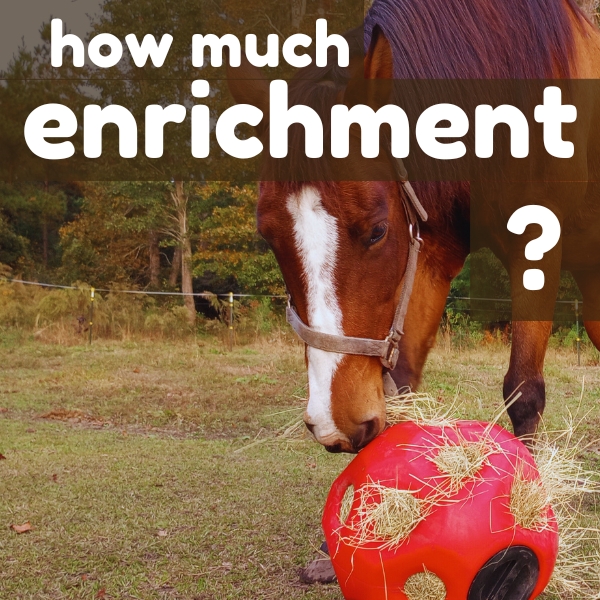
How much enrichment do horses need? It’s a big question for all equestrians who provide enrichment for their horses or who want to prevent boredom. But how can you tell whether you’re giving enough? Let’s take a look at how to know how much enrichment and boredom relief your horse needs, whether they live in a stall or pasture.
Recap: What is Horse Enrichment, Anyway?
Knowing how much enrichment horses need starts with recognizing that they need it in the first place. So what is equine enrichment, and why does it matter?
Equine enrichment is more than just “boredom busting” stall toys like jolly balls (though we do love those). Enrichment for horses means giving them the opportunity to use their bodies and minds and behave like horses. It’s anything that we do to encourage natural behaviors and provide stimulation and interest.
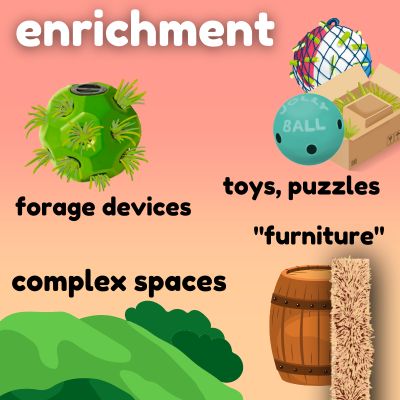
This means that fun toys are enrichment for your horse – but so are devices that let your horse eat forage slowly over the 24 hour day, like hay nets. And so are additions to your stall or pasture that let your horse groom themselves or experience different situations, like DIY sand pits for rolling and resting, or wall-mounted scratching stations.
Enrichment for horses is important because otherwise, modern stalls and pastures stay the same day after day and can be empty of stimulation. Our horses deserve the best wellbeing possible, which means enriching their environments.
You can find more information in this article on why horses need enrichment.
How Much Enrichment Do Horses Need?
The best answer is: as much and as often as needed for your horse to engage in natural behaviors at a healthy frequency throughout the day.
If this sounds a little dry and hard to picture for your horse, that’s understandable. Let’s break it down a bit more.
For most horses, the best amount of enrichment means providing the most enriched space possible – like a large complex outdoor pasture with a herd of other horses – and then using different experiences or items each day to provide change and interest.
The more difference between how your horse lives right now and the way their wild ancestors would have lived, the more enrichment they probably need. In other words, it helps you fill in the gaps.
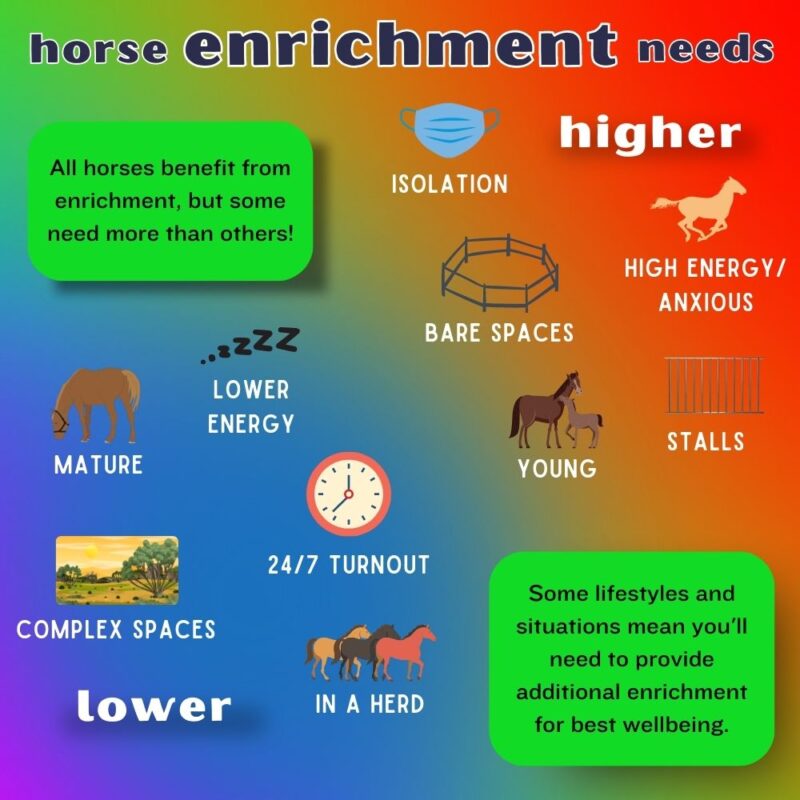
This means that when horses live in smaller areas like stalls or small paddocks, it’s best for them to have a lot of boredom relief on a daily basis. This includes permanent features to help them with their basic needs, like slow feeders for forage. It also includes add-ins that you swap in and out daily, like sensory items or toys.
It usually takes much more time and effort to provide enough enrichment to keep a stalled horse physically and mentally well.
A bigger, more complex environment can support many different activities, like grazing, grooming, resting, and playing. If your horse lives in an enriched pasture or paddock with friends, they’re probably able to meet most of their mental and physical needs.
This usually means less time and effort for you day-to-day. You’ll also be able to focus your time and energy on adding fun extras like new toys and activities.
Enrichment Has Limits
Enrichment for horses is a powerful tool for good mental and physical health. But as beneficial as it is, there are limits.
No amount of toys or boredom busters can make permanent confinement healthy or appropriate. Horses need access to the outdoors, and other horses, for wellbeing. Enrichment can make short periods of confinement easier for the horse to cope with, by giving them choices and options.
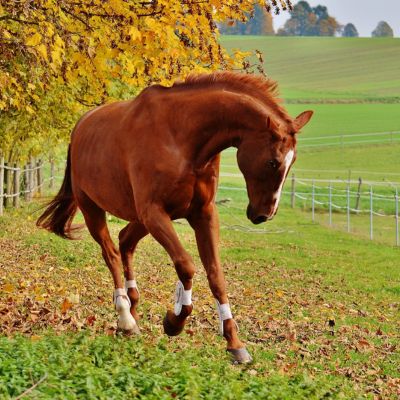
This is why stall rest for horses is such a difficult experience for horse and owner. When your horse is stalled, it’s important to work hard to provide consistent, frequent, and varied enrichment.
Find more on creating enriched stalls here.
How Much Enrichment for Stalled Horses?
There’s no single answer to the question how much enrichment is best for horses in stalls. But here are some basic guidelines. You’ll want to provide forage and a friend at all times, then add a rotating array of extra items and activities throughout the day. Otherwise, there’s no stimulation, variety, or ability for your horse to make choices – only confinement and boredom.
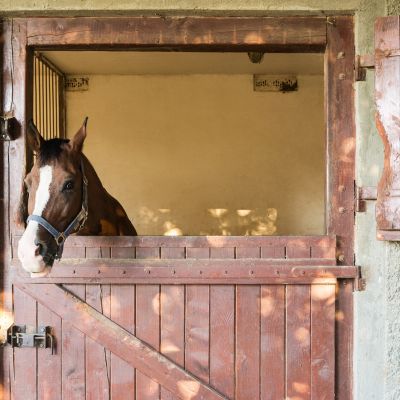
Remember to remove toys, puzzles, and other temporary enrichments when the horse is finished with them, or the next time you feed or care for the horse. This keeps the enrichment fresh and engaging and helps prevent problems like ignoring toys and other items.
You can also use this rough outline for horses in small outdoor pens or corrals.
All the Time
- Forage (hay), in a slow feeder or net for 24/7 access
- Another horse next door, preferably a friend, without bars between if possible
- Scratching or grooming device on the stall wall
Daily (More often is OK!)
- A foraging or food based toy such as a rolling treat ball or DIY licking toy (two or more per day, AM and PM)
- Scent or other sensory enrichment, changed each day (find ideas here)
- A non-food toy for play, such as a chew toy
- A positive reinforcement (clicker) training session
Weekly/A Few Times a Week
- Change or mix up stall bedding (great opportunity for deep stall bedding!)
- Social enrichment like scent board or horse sounds
- Change any sensory boards like DIY texture boards, grooming options, etc
This might look like a lot – and it is! This is because stalls are otherwise completely bare of stimulation. Adding enrichment to your daily horse care along with feeding, grooming, and stall cleaning is a must when working with a stalled horse.
How Much Horse Enrichment for Turnout?
Turnout in pastures or paddocks means there’s usually less need for small activities like toys or food based activities, because most turnout spaces provide opportunity for behavior on their own. It’s also easier to install “furniture” items like shelters or grooming stations that your horse can use any time they like.

All the Time
- Forage such as grass, or hay in a slow feeder or net for 24/7 access
- At least one other horse in the same space
- Shelter for sleeping and resting
- Grooming option like a natural tree or a scratching post
Any Time
- Toy, food puzzle, and other small enrichment options (more often if your horse seems to enjoy them)
- Browse (edible leaves, herbs etc) and other natural food enrichments
- Positive reinforcement (clicker) training sessions
- Add sensory enrichment like scent, sounds, textures
Every Few Weeks/Months
- Check and repair features like sand pits, posts, shelters
- Add or swap in a new pasture enrichment features
More enrichment is usually better, because even pastured horses appreciate extra activities that add interest to their day. If your paddocks are small or don’t have much natural variety in place, you’ll want to add smaller enrichment options like food and treat toys more frequently.
Needs by Individual
Your horse’s age along with their mental and physical state also impact how much stimulation they need. Some situations increase the amount of stimulation your horse is likely to need.
Younger horses benefit from more enrichment. Growing, developing minds and bodies need stimulation. This is especially true if your foal, weanling, or young adult horse lives in a stall for any reason.
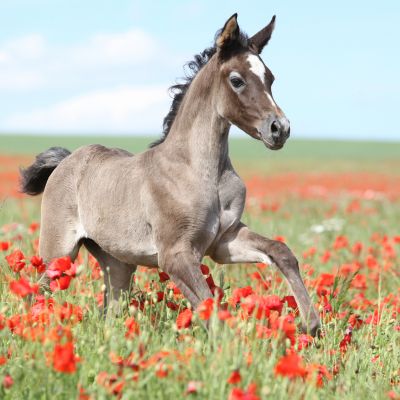
Horses who tend to struggle with anxiety or stress, or who seem to have a lot of energy, also need more attention to enrichment. Sometimes, anxiety or stress behaviors can be reduced or even resolved by adding more opportunities for natural behavior and choice.
Lastly, horses who are ill or recovering from injury should have an enriched environment, plus additional items and changes each day. Dedicating time to mental wellbeing can help prevent boredom and creates enjoyment for the horse during a stressful and uncomfortable time.
How Much? It’s In Your Hands
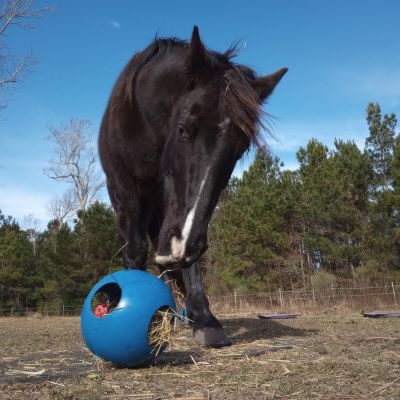
The guidelines in this article are rough estimates. In the end, it’s all up to you! The best enrichment plan is one that you can stick to each day. It’s better to offer a little enrichment regularly, and be consistent, than start big and then give up.
You can also change your enrichment tactics at any time. For instance, if your injured horse is cleared for short turnouts or hand walking, you might be able to use a few less items in the stall. Or you may find that your pastured horse seems to love enrichment items so much that you choose to give more, because it’s fun for both of you.
But remember – just by exploring equine enrichment, you’re taking steps to a happier and more interesting life for your equine friend. Happy enriching!